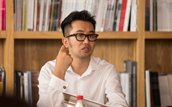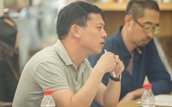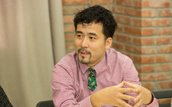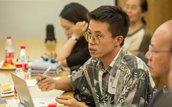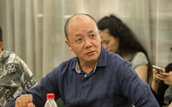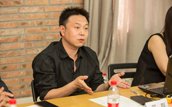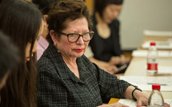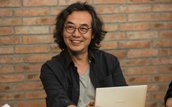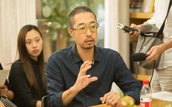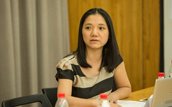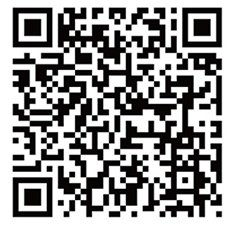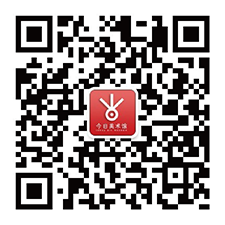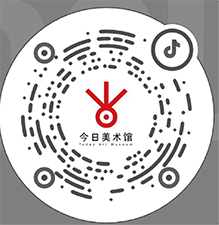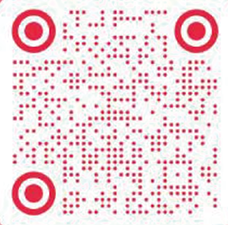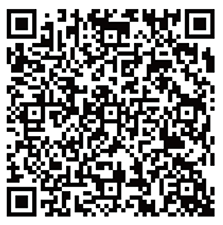Location: Meeting Room,5/F,Building No.1
Imagined future: workshop on the development of art and technology
Back
Duration: 2015-08-27
--
2015-08-27
Location: Meeting Room,5/F,Building No.1
Location: Meeting Room,5/F,Building No.1
Seminar Introduction
Art and science, science and technology development field of vision, especially the Internet technology and digital technology's rapid development in China today, today art museum development here at such a side contains different artists, different age, different experiences of artists exhibition entity and virtual space inside, there is "augmented reality" is how such three areas in a daily and exceptions, a change in an individual, and historical construction in the future, and the position in the future utopia.
Some works emphasize a sense of history, while others emphasize a sense of future. The exhibition includes the following aspects: one is daily and abnormal, the other is a changing individual, and the future of historical construction and utopia. It's an international exhibition. Virtual art galleries are all about viewing art, while today's future museum is about generating a kind of space. This is a combination of Internet technology, digital aesthetics and digital technology is a beginning.
Although new technology has brought us a lot of benefits, brought us some changes in thinking and liberated us, it also has duality and brought us a lot of anxiety.
China's art museums are in the initial stage of development. The most important thing of the future pavilion is to show a lot of unpredictable things and activate people's imagination, instead of keeping people in a past experience.
There are three aspects of the future museum strategy: first, the museum itself should make breakthroughs; Secondly, the competition among private art museums is becoming more and more fierce. Today, art museums need to find a new direction. Third, what today's technological revolution has brought us is our relationship with art, our relationship with reality.
Looking ahead, gao peng hopes that many artists in the future pavilion will be able to display the exhibitions and virtual projects he has participated in here, including virtual works and the possibility of enhancing reality, through the APP downloaded from their mobile phones. The initiator of future museum is Mr. Wang hui, who designed and built today art museum, and Mr. Sui jianguo, who created the earliest model of future museum in 2009.
The four perspectives are called daily, abnormal, changing individuals, historical construction of future and utopian future. The whole exhibition has three parts: physical exhibition, virtual exhibition and third party.
Today's future museum requires that all artists' plans and physical plans must be different, and the third-party reality can only be retained and realized by four artists.
The concept of virtual curator comes from the hope that all the public can decide the image of the curator and the image of the artist. People can also hide their real gender and age in the network and virtual pavilion, which is the complete spirit of the Internet.
There should be a bond between the entity, the virtual and the promotion of reality, and there should also be an emotional bond between good works of art and the audience. Therefore, it is impossible for the virtual museum to replace the physical museum.
Wang hui thinks that when a work needs a very large space to express itself, today's future museum becomes an art museum without any form. It does not exist in the form of entity, but it exists in a virtual space or the space state of virtual reality formed by a lot of information. He also gives examples like a universe of art, where each work is like a planet. When the audience clicks on it through a technological means, they will enter this planet, and they can exit into another work, just like the star trek, which is a huge and increasing amount of information.
The core issue is how to make the museum of the future provide artists and artworks with a greater number of spatial and social possibilities, and enable the public to have more access to artworks through more ways.
Sui jianguo said that when an architect designs a space, he is both a foil artist and a challenge artist. He thinks that so far no artist in today art museum has been able to make full use of its space. He thinks that it is possible to try to include public space in art works, such as the wall outside the art museum. Everyone wanted an idea that went beyond the walls of the modern art museum, and today we have the idea of the museum of the future.
Virtual space is not in a tool, it will have echoes with reality. It appears to be in the tool, but actually outside the tool, is a separate existence.
Technological progress is a kind of alienation, and the tool is the spectacle of human expansion.
Su lei stressed that the future is one of the most important themes the world is watching. Now there are 120 biennales in the world, 120 cities, and the position of these 120 cities in the economic network actually has the essence of this exhibition. This exhibition is an advanced topic, and it must be an international exhibition.
Today, virtual and real are getting closer and closer, and there is a convergence in this exhibition.
There was a futuristic movement in Italy more than a hundred years ago. Although it did not leave much work, it isolated the entire American culture from European art and created a new culture. When today's artists and scientists combine science and art, as with the futurist movement a hundred years ago, new art is born.
He guiyan summed up the exhibition's design in the viewing route than other artists in today's solo exhibition more innovative.
This exhibition is a double change. One is the relationship between the work and the scene itself. The most sufficient possibility of this change is the full presentation of this new possibility. For example, many of teacher sui jianguo's works consider the interaction between audience, people and theater from the perspective of sculptors. The works of linke and Suzanne Anker show the attention to micro life. This exhibition USES new media and relatively new communication methods. The second is the design of interdisciplinary, but the source, structure and the past works of art method and material is not the same, has been expanded.
In today's situation, what the future looks like depends not only on the development of technology and media, but also on a kind of humanistic care.
Future works should not be a closed self-structure, but should show some kind of openness, meaning and value is not the only. The museum of the future should establish a new public relations, which may replace and complete some of our democracy and the liberation of personality, which is a possibility.
Suzanne Anker highlights one area where the workshop may be reaching that New York has yet to reach.
We are now living in an age when entities have begun to move beyond our horizons. What we're doing in the latest biosynthetic technologies is very similar to what we're doing in the art world, where we're taking existing concepts of matter and life and analyzing them, recombining them, and using them for other purposes.
Compared with the real space, the virtual space has very significant different characteristics. Firstly, the subjectivity is different, and the body's response is also different.
When many theorists answer the question about the definition of art gallery, besides the superficial meaning, they look at the art gallery from another perspective. It is a historic space for the storage of some things that have passed away. In this definition, the gallery does not present the future, which is contrary to the topic discussed in today's seminar.
Miao xiaochun said that in the creation of works of future pavilion today, many realistic and complex factors should be considered, and many technical difficulties should be overcome. There was no confidence in the process, but with the efforts of the team, the work was finally completed successfully.
In the street project, miao xiaochun believes that there are three things to do: one is a solid thing, namely a huge painting; The second is augmented reality; The third part is online and offline. He thinks the first part he is quite sure, because recently one is doing a physical digital painting. He was half confident in the second part, because it had to be combined with the actual venue conditions at the end. He thinks the third part is the best and the most impossible for him to do. He thinks the concept is very good, but he has no way to achieve the degree he imagined at present.
The concept of future pavilion is very good, but it must have a continuity, to continue to do.
Hu ren yi introduces the growth and learning process of art museums in China. Compared with western art museums, China art museum is new, but at the same time, "new" features are more democratic, which can bring more innovations to art museums. In particular, new media events are encouraging. After the new media comes out, artists will use this way of speaking and presenting, and many objects and faces will be presented in a new way. He believes that western art galleries' avoidance of new media or research on biotechnology media is due to their fear. When they do, capitalist lies are exposed. So American artists are willing to come to China to make such an exhibition.
Lin ke thinks his work and the theme of imaginary future very suit, it is fictitious. This time with work, it is a desktop background of exhibition space, although it is a purely photography, but such images, there will be light, directly to the picture on the screen to let the audience can fully feel the existence of this space, the space of all the details are in the inside, the audience can feel in this space there, to imagine, to produce whatever they can see. That's the way a lot of galleries take pictures these days.
The curtain call generalizes that each art museum is faced with the limitation of space, but today art museum has found a new solution, which has expanded the understanding of the art museum to the participants, infinite space, strong sense of technology and interactive effect, providing direction for the possibility of future art museum.
In addition, the future of the museum should present a more perfect interactive relationship, which is beyond the concept of simple video works. But at the same time, "don't go too far", which does not mean conservative ideas, but should be more long-term planning.
Today's media is a very diversified form, and it is quite a process of what is presented by a relatively elite thinking class. This process can provide so many possibilities, and how many possibilities can the art museum provide? As a media, they are looking forward to it.
Guest
Gao Peng,Sui Jianguo,Miao Xiaochun,Su Lei,Xu Wenkai,He Guiyan,Suzanne Anker Hu Renyi,Lin Ke,Xie Mu
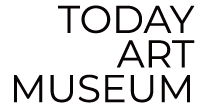
 CHINA THE ART OF CRAFT & DESIGN EXHIBITION 2025
CHINA THE ART OF CRAFT & DESIGN EXHIBITION 2025 Bologna Illustrators Exhibition 58th
Bologna Illustrators Exhibition 58th Zhiguan: Wang Zimu Art Exhibition
Zhiguan: Wang Zimu Art Exhibition Seasons of Cezanne The Immersive Experience
Seasons of Cezanne The Immersive Experience Marie de Villein: Behind the Sun
Marie de Villein: Behind the Sun “一粒一世界——北京大学颗粒艺术展”
“一粒一世界——北京大学颗粒艺术展”
 Florentijn Hofman :Celebrate!
Florentijn Hofman :Celebrate! Li Nu: As if Sand Were Stone
Li Nu: As if Sand Were Stone Exhibition customization course | TIM YIP MIRROR children's art class
Exhibition customization course | TIM YIP MIRROR children's art class
 TAM Open Studio / Hello, New Friends
TAM Open Studio / Hello, New Friends WANG SHIKUO/TODAY ART MUSEUM YOUNG ARTIST RESIDENCY IN NEW YORK CITY
WANG SHIKUO/TODAY ART MUSEUM YOUNG ARTIST RESIDENCY IN NEW YORK CITY 2018 third wang shikuo award -- nomination exhibition of contemporary young artists
2018 third wang shikuo award -- nomination exhibition of contemporary young artists

